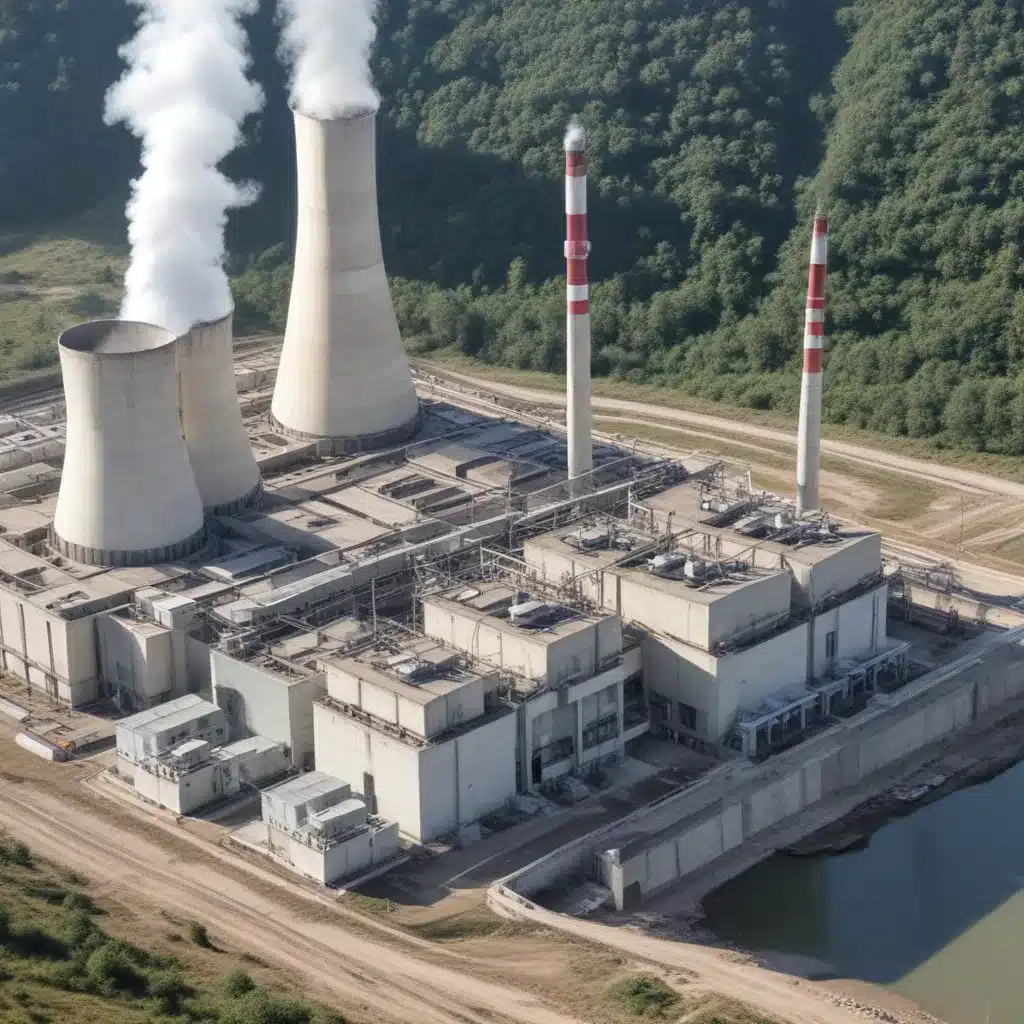
Navigating the Complex Landscape of Coal-Powered Energy
India’s growing demand for electricity has led to the rapid development of coal-fired power plants across the country, including the Baradarha Power Station in the state of Chhattisgarh. As a seasoned expert in water and sanitation services, community engagement, and advocacy, I aim to provide a comprehensive overview of this power station, its environmental impacts, and the broader implications for sustainable energy solutions.
Baradarha Power Station: An Overview
The Baradarha Power Station, also known as the DB Power Thermal Power Plant, is a 1,200-megawatt (MW) coal-fired power station located in Baradarha, Janjgir, Chhattisgarh. The power station consists of two units, both of which have been commissioned in recent years.
Unit 1 of the project was commissioned in February 2014, with a financing agreement that secured $565.39 million in debt from a consortium of Indian banks and financial institutions, as well as $188.46 million in equity from Diligent Power Ltd. Unit 2 was commissioned a year later, in mid-2015, with a similar financing structure of $541.03 million in debt and $180.52 million in equity.
The power station is owned and operated by DB Power Ltd., a subsidiary of the Bhaskar group, which is known for publishing the largest-selling Hindi newspaper in Chhattisgarh. In August 2022, Adani Power announced its intention to acquire DB Power Ltd., but the deal was ultimately scrapped in February 2023 due to concerns raised by the Hindenburg Research report.
Environmental Concerns and Community Impacts
While the Baradarha Power Station plays a crucial role in meeting the region’s energy needs, its development has not been without controversy and environmental concerns. The power station’s operation and the associated coal mining activities have had significant impacts on the local community and the surrounding environment.
One of the primary concerns is the displacement of local communities to make way for the power station and the proposed coal mine. According to a company-sponsored environmental impact assessment, the coal mine project alone would displace an estimated 524 families from six settlements, affecting around 2,709 people and impacting over 51,000 individuals in the area.
The public hearing held in February 2011 on the proposed coal mine project saw strong opposition from the local community, with 438 people speaking out against the project, and none in support. In response, DB Power submitted an affidavit pledging not to conduct any mining operations on nagar panchayat (local government) land, and a supplementary letter promising to relocate any proposed water tanks and coal piles. However, four villages would still lose their lands to the project.
Activists and environmental groups have raised concerns about the power station’s impact on surface and groundwater sources, forests, and local fauna. The Centre for Science and Environment, a Delhi-based research organization, criticized the environmental impact assessment report for not adequately addressing these issues, noting that nearly 40% of the project area is covered by forests, including 11 reserved and 2 protected forests within a 10-kilometer radius.
The Role of Advocacy and Community Engagement
The challenges surrounding the Baradarha Power Station highlight the importance of effective advocacy and community engagement in addressing the complex interplay between energy needs, environmental protection, and the rights of local populations.
Organizations like the Joint Action for Water (https://jointactionforwater.org/) play a crucial role in amplifying the voices of affected communities, raising awareness about the impacts of such projects, and advocating for more sustainable and equitable energy solutions. Through collaborative efforts, these groups can work with policymakers, industry stakeholders, and local communities to find balance between economic development and environmental protection.
One key aspect of this approach is the emphasis on inclusive, participatory decision-making processes. As evidenced by the public hearing on the proposed coal mine, giving communities a meaningful voice in the planning and implementation of such projects can lead to more informed and responsible decision-making.
Additionally, community-led initiatives that promote water conservation, pollution control, and environmental restoration can help mitigate the long-term impacts of coal-fired power plants. By engaging local stakeholders and leveraging their unique knowledge and perspectives, these efforts can contribute to the development of more sustainable energy infrastructure that prioritizes the well-being of both people and the planet.
Exploring Alternative Energy Solutions
As the world transitions towards a more sustainable future, the role of renewable energy sources becomes increasingly crucial. While coal-fired power plants like Baradarha continue to play a significant role in India’s energy mix, the country has also made strides in expanding its renewable energy capacity, particularly in the areas of solar and wind power.
Organizations such as the Joint Action for Water are well-positioned to advocate for and support the development of these alternative energy solutions, which can provide clean, reliable, and affordable electricity while minimizing the environmental and social impacts associated with fossil fuel-based power generation.
By collaborating with policymakers, industry leaders, and local communities, these organizations can help shape the energy landscape of the future, ensuring that the pursuit of economic growth and development is balanced with the need to protect the environment and safeguard the rights of all stakeholders.
Conclusion: Towards a Sustainable Energy Future
The Baradarha Power Station, like many other coal-fired power plants in India, represents the complex challenges and trade-offs involved in meeting the growing demand for electricity while addressing environmental concerns and the rights of local communities.
As a seasoned expert in water and sanitation services, community engagement, and advocacy, I believe that the path forward lies in a multifaceted approach that prioritizes transparency, inclusive decision-making, and the development of sustainable energy solutions. By amplifying the voices of affected communities, advocating for responsible policymaking, and promoting the adoption of renewable energy technologies, we can work towards a future where energy needs are met in a manner that is truly sustainable and equitable for all.

